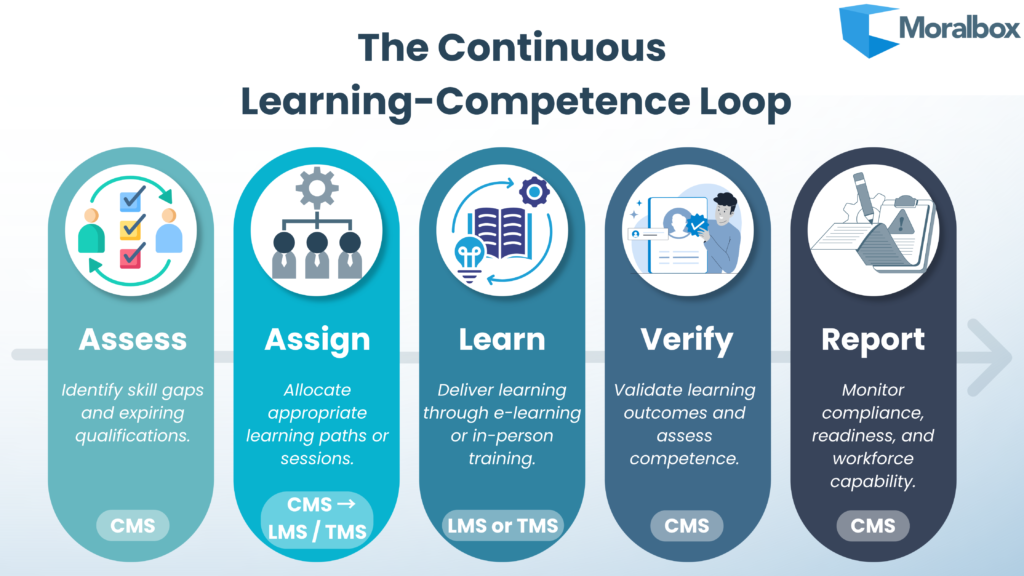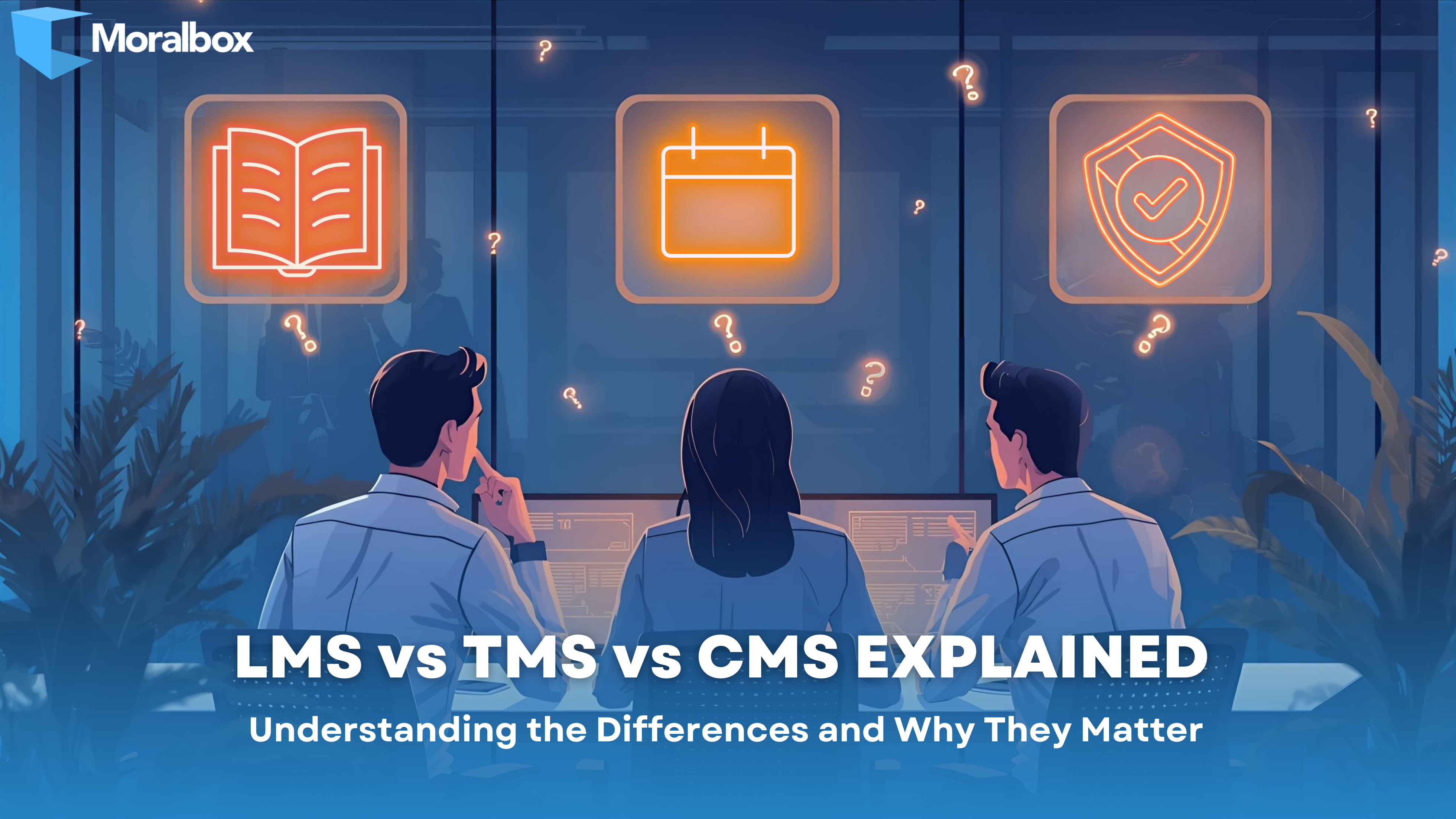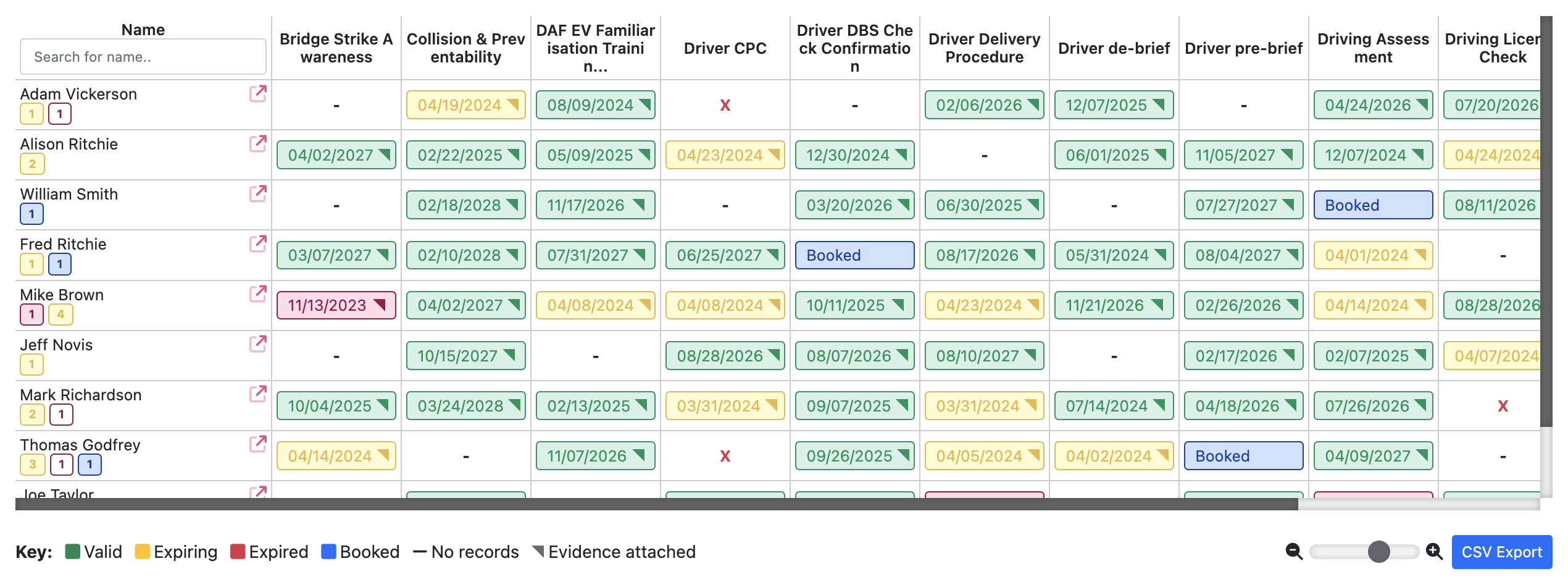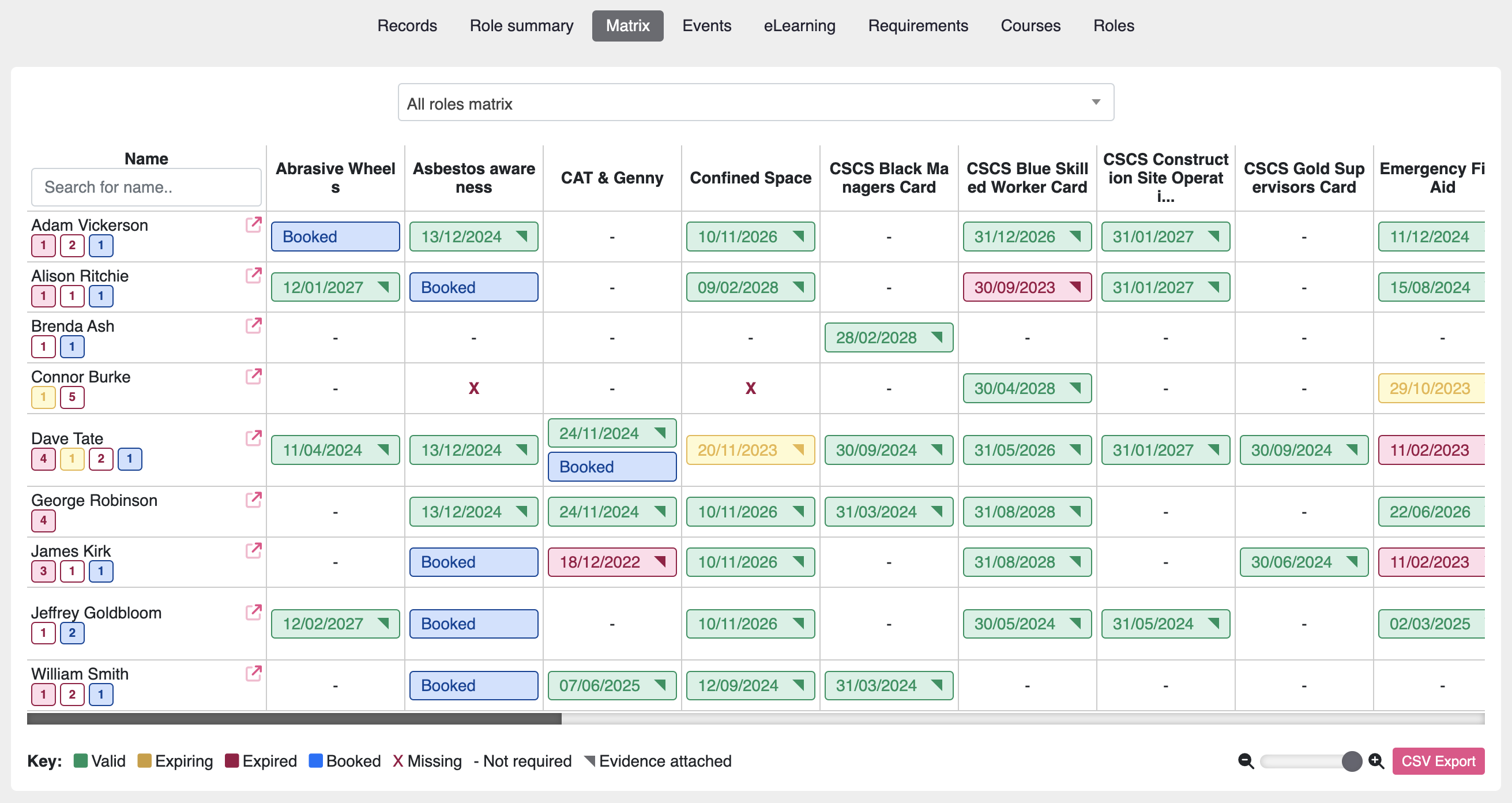A Familiar Struggle
Imagine you are the L&D manager of a growing organisation. You have just received an urgent email from Operations saying a technician cannot start work because their safety certificate has expired. The training team insists the refresher was completed last month, but HR’s spreadsheet says otherwise. You open the tracker, scroll through endless rows of names and dates, and finally realise what went wrong. Someone forgot to update a shared folder. Now compliance is at risk, productivity is on hold, and frustration ripples through the team.
This scene plays out daily across countless organisations still relying on spreadsheets, emails, and disconnected systems to manage learning and competence. The issue is not effort but integration. Over time, tools such as Learning Management Systems (LMS), Training Management Systems (TMS) and Competency Management Systems (CMS) have multiplied. Yet they are often mistaken for one another, creating confusion and gaps that cost time, compliance and confidence.
With hybrid work expanding, safety standards tightening and skills-based hiring becoming the norm, clarity on these systems has become essential. According to recent research, 88% of L&D leaders have seen budget increases over the past five years, while 36% cite better visibility of skills as their top priority (Pagano and Viñuales Abarca, 2025).
That is where this guide comes in. It unpacks what LMS vs TMS vs CMS really mean, why each matters, and how, together, they create a seamless learning and compliance ecosystem. You will also discover how Moralbox brings all three under one roof, turning training management into a live, data-driven view of workforce capability.
TABLE OF CONTENTS
- A Familiar Struggle
- The Three Layers of Organisational Learning
- Learning Management System (LMS): Delivering and Measuring Learning
- Training Management System (TMS): Planning, Scheduling, and Coordinating
- Competency Management System (CMS): Validating and Maintaining Capability
- How They Fit Together: The Closed Learning-Competence Loop
- Comparison at a Glance: LMS vs TMS vs CMS
- Why This Matters More Than Ever
- Building a Connected Learning Ecosystem
- Moralbox: The Bridge Between Learning, Training, and Competence
- Choosing the Right Combination for Your Organisation
- Conclusion: LMS vs TMS vs CMS
- FAQs
- References
The Three Layers of Organisational Learning
At their core, LMS, TMS, and CMS exist because “training” isn’t one thing, but a series of connected experiences. To understand where these systems fit and why the LMS vs TMS vs CMS comparison matters, try thinking of learning in three layers:
- Learning – gaining new knowledge or understanding (usually through study or e-learning).
- Training – developing or practising skills under supervision.
- Competence – demonstrating that those skills are applied effectively and safely on the job.
Each layer demands a different toolset, and confusing them can lead to inefficiencies. It’s like using a thermometer to measure speed; you might get data, but not the right kind.
👉 Related Reading: Skill Matrix Template for a quick guide to mapping employee skills and identifying training needs effectively.
Learning Management System (LMS): Delivering and Measuring Learning
A Learning Management System (LMS) forms the digital backbone of modern organisational learning. It creates, delivers, and tracks digital or blended learning, making it the first pillar in the LMS vs TMS vs CMS framework. It is the organisation’s virtual classroom, ensuring consistency and visibility across teams.
Through the LMS, companies can upload e-learning courses, video modules, microlearning content, or compliance training programs and then automatically track enrolment, completion rates, and assessment scores.
For distributed or hybrid teams, this consistency is invaluable. The LMS ensures everyone receives the same learning experience, reduces administrative effort, and provides measurable data to demonstrate learning. From onboarding to compliance, it adds structure and scalability that manual tracking can’t achieve.
Still, completing a module or passing a quiz doesn’t guarantee on-the-job competence. The LMS measures knowledge acquisition, not practical ability. To bridge that gap, organisations often pair it with systems that manage and validate training performance.
Training Management System (TMS): Planning, Scheduling, and Coordinating
Suppose a LMS focuses on the what of learning, the Training Management System (TMS) focuses on the how. It involves planning, coordination, and logistical execution of training activities, particularly those that include instructors, physical locations, or blended programs. Where spreadsheets once managed classroom bookings and instructor calendars, a TMS now centralises all that information in a single system, ensuring smooth operations across departments and regions.
Within a TMS, administrators can allocate instructors, book rooms, manage resources, and set budgets. The system tracks attendance, collects feedback, and generates completion records for internal or external training sessions. Many training providers also use their TMS to automate client interactions such as course registrations, payment processing, and post-training evaluations. By connecting with CRM or finance systems, the TMS becomes both a scheduling engine and a business management tool.
The value of a TMS becomes clear as organisations scale. Coordinating hundreds of courses, venues, and trainers quickly becomes overwhelming without automation. A robust TMS ensures the right people are in the right place, at the right time, with the right materials. It prevents double-bookings, reduces cancellations, and provides accurate visibility into training operations, budgets, and instructor utilisation.
However, while it significantly improves efficiency, a TMS still captures attendance rather than competence. It can show who participated, but it cannot confirm whether the learning achieved its intended outcome or whether the employee can now perform a task to standard. It remains primarily an administrative and scheduling powerhouse rather than a true measure of ability. To complete the picture, organisations turn to the third piece of the puzzle, the Competency Management System.
Competency Management System (CMS): Validating and Maintaining Capability
While the LMS and TMS manage learning and logistics, the Competency Management System (CMS) ensures that all that activity translates into actual, demonstrable skill on the job. The CMS shifts the focus from what training happened to what competence was achieved. It allows organisations to define the precise skills, behaviours, and proficiency levels required for every role and then evaluate employees against those standards through evidence-based assessments.
Furthermore, managers can record on-the-job assessments, upload supporting documents, and capture verification from supervisors or mentors. The system brings together training history, certifications, and field evaluations to give a real-time view of who’s competent, who’s in training, and who’s due for renewal. As a result, with built-in expiry alerts and audit-ready reports, a CMS becomes the cornerstone of compliance assurance.
This is especially critical in regulated, safety-sensitive sectors. Survey data shows broad adoption of competency practices in core talent workflows, indicating that 68.4% attach competencies to job descriptions, 73.7% use them in hiring, and 77.2% use multi-level proficiency scales (HRSG, 2024).
Unlike an LMS or TMS, which focus on delivering and organising training, a CMS validates outcomes. It answers the essential question: “Can this person perform their job safely and competently today?” And when integrated with the other systems, it creates a continuous loop between learning, training, and verification.
How They Fit Together: The Closed Learning-Competence Loop
When connected, an LMS, TMS, and CMS form a closed, continuous cycle of learning and validation. The CMS identifies gaps, assigns learning via the LMS or TMS, employees complete training, competence is verified, and reports are generated, forming the backbone of modern workforce capability.
This integrated workflow is why LMS vs TMS vs CMS is not just a comparison, but a framework for building a connected learning ecosystem.
Comparison at a Glance: LMS vs TMS vs CMS
To clarify how each system supports this continuous learning loop, the table below summarises their core purposes, strengths, and limitations within a connected ecosystem.
| System | Primary Purpose | Core Functions | Best For | Strengths | Limitations |
|---|---|---|---|---|---|
| LMS – Learning Management System | To create, deliver, and track digital or blended learning. | Hosts e-learning courses, manages enrolments, tracks completion, supports SCORM/xAPI, delivers assessments and reports. | Organisations delivering online learning, onboarding, compliance courses, and professional development. | Standardises learning delivery, ensures access anywhere, automates reporting and tracking. | Measures knowledge gained but not proven ability on the job. |
| TMS – Training Management System | To plan, schedule, and manage instructor-led or practical training sessions. | Coordinates sessions, instructors, venues, budgets, and feedback; manages resources and attendance; integrates with CRM and finance tools. | Training providers, apprenticeship programmes, and large enterprises with extensive classroom or blended training. | Streamlines logistics and administration, reduces duplication and scheduling errors. | Tracks attendance but not whether participants are competent or job-ready. |
| CMS – Competency Management System | To validate and maintain workforce competence and compliance. | Defines roles and required competencies, records assessments, stores evidence, issues alerts, produces audit-ready reports. | Regulated and safety-critical industries where proof of competence is mandatory. | Demonstrates capability and compliance, identifies skill gaps, links learning with real-world performance. | Usually relies on LMS/TMS data for learning and training delivery. |
Why This Matters More Than Ever
The pace of change in work and regulation means organisations can’t afford disjointed systems. Every year brings new frameworks and safety standards, from ISO 45001 to GDPR and digital upskilling requirements. Consequently, proof of competence has become a baseline expectation, not a formality.
Beyond compliance, integrated learning ecosystems offer real business value. They reduce downtime, prevent safety incidents, and give employees clearer development paths. They turn learning data into actionable intelligence, helping organisations anticipate needs instead of reacting to failures.

Thus, an LMS keeps people learning, a TMS keeps training organised, and a CMS keeps people competent. Together, they keep your organisation ready.
The pace of regulatory change means organisations can’t afford fragmented systems. A recent report by HRSG (2018) confirmed that they currently require workers to ensure worker competence and to maintain, evaluate, and continually improve OH&S performance. This makes demonstrable competence a baseline expectation, not a nice-to-have.
Beyond compliance, integrated ecosystems reduce downtime, prevent incidents, and give employees clear development pathways.
Building a Connected Learning Ecosystem
Modern learning can no longer exist in silos. Organisations must create a connected learning ecosystem where every piece of education, training, and competency data works together to tell a complete story of capability. When systems operate separately, an LMS for e-learning, a TMS for workshops, and spreadsheets for certificates, visibility declines and duplication increases. A connected ecosystem eliminates those barriers by bringing everything into one unified framework.
Within such an environment, learning becomes a continuous cycle. Every course, session, and assessment connects to role-based competencies, building a live picture of workforce readiness. Managers can instantly identify who is qualified or due for renewal, compliance teams can generate audit-ready reports in seconds, and employees gain clearer career pathways.
Achieving this level of integration starts with defining role-based competencies, centralising training data, and automating renewal workflows. Over time, it transforms an organisation from reactive tracking to proactive capability-building, turning compliance into confidence and learning into measurable performance. With modern technology, this integration is no longer complex or costly, and Moralbox makes it simpler than ever.
Moralbox: The Bridge Between Learning, Training, and Competence
Moralbox was designed to unify these three systems into one intelligent platform. Acting as the bridge between LMS, TMS, and CMS functionality, it seamlessly connects learning delivery, training logistics, and competence assurance. The platform automatically tracks certifications and expiry dates, provides dynamic skills matrices for live visibility, and securely stores assessments and evidence for audit readiness.
What truly sets Moralbox apart is its ability to connect learning outcomes with proven performance. When an employee completes a course or session, the results are added directly to their competency profile, giving managers an instant snapshot of readiness. This integration means leaders always know who can perform safely and effectively, while audits become faster and more reliable. By transforming static data into actionable insight, Moralbox turns compliance management into a strategic advantage.
In short, Moralbox simplifies the complex world of learning and competence tracking. It helps organisations move away from spreadsheets and disconnected tools toward a single, scalable ecosystem. If your organisation is ready to connect learning, compliance, and performance under one intelligent roof, Book a Free Discovery Call with our Experts to see how Moralbox can help you build a safer, smarter, and more capable workforce.
Choosing the Right Combination for Your Organisation
Not every business needs all three systems in equal measure. The right mix depends on your size, industry, and training model.
- LMS + CMS: Ideal for in-house training teams in regulated sectors like healthcare or manufacturing, where learning and competence must be verified together.
- TMS + LMS: Best for training providers managing large-scale, blended programs combining in-person and digital delivery.
- CMS + TMS: Suited to operational or safety-critical industries where competence relies heavily on practical training.
However, the lines between these systems are increasingly blurred. Platforms like Moralbox are redefining the space by offering a centralised solution that brings all three functions together, reducing cost and complexity.
👉 Related Reading: LXP vs LMS: Understanding the Difference in Modern Learning Platforms to learn where LXPs fit in alongside LMS, TMS, and CMS tools.
Conclusion: LMS vs TMS vs CMS
The ultimate goal of every learning and development effort isn’t to collect certificates, but it’s to ensure that people can do their jobs safely, effectively, and confidently.
In a world where skill requirements shift faster than ever, organisations that integrate learning, training, and competence don’t just stay compliant; they remain competitive. They move from reactive tracking to proactive growth.
By connecting the dots between learning delivery, training management, and competence assurance, Moralbox helps businesses build not just a trained workforce but a capable one.
FAQs
What is the difference between LMS, TMS, and CMS?
In essence, an LMS delivers and tracks digital learning, a TMS manages training logistics, and a CMS verifies on-the-job competence. Together, they create a complete learning and compliance loop.
Can one system replace the others?
In most cases, no. An LMS handles learning delivery, a TMS coordinates sessions, and a CMS validates workforce competence, each playing a distinct role. Therefore, organisations in regulated or safety-critical sectors often need all three.
How does Moralbox combine them?
Moralbox unites the strengths of LMS, TMS, and CMS into a single platform by tracking training, validating competence, and also by keeping your workforce compliant in real time.
References
International Organization for Standardization (2018) ISO 45001:2018, ISO. Available at: https://www.iso.org/standard/63787.html (Accessed: 10 November 2025).
Pagano, E. and Abarca, M. (2025) The Future of Corporate Learning and Skills What Employers Are Looking For THE FUTURE OF CORPORATE LEARNING AND SKILLS: WHAT EMPLOYERS ARE LOOKING FOR. Available at: https://media-publications.bcg.com/The-Future-of-Corporate-Learning-and-Skills-BCG-Whitepaper.pdf (Accessed: 10 November 2025).
HRCI (2024) State of Competencies 2024. Available at: https://cdn.prod.website-files.com/651b0a9dbcedf231a8b2c127/65c2679827ebbeb237fd6a87_State-of-Competencies-2024.pdf (Accessed: 10 November 2025)

Ananya is a Marketing Executive at Moralbox, passionate about creating content that connects learning with business impact.


